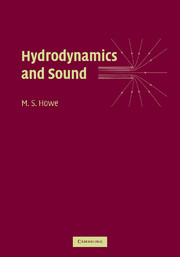Summary
Fluid mechanics impinges on practically all areas of human endeavour. But it is not easy to grasp its principles and ramifications in all of its diverse manifestations. Industrial applications usually require the numerical solution of the equations of motion of a fluid on a very large scale, perhaps coupled in a complicated manner to equations describing the response of solid structures in contact with the fluid. There has developed a tendency to regard the subject as defined solely by its governing equations whose treatment by numerical methods can furnish the solution of any problem.
There are actually many practical problems that are not yet amenable to full numerical evaluation in a reasonable time, even on the fastest of present-day computers. It is therefore important to have a proper theoretical understanding that will permit sensible simplifications to be made when formulating a problem. As in most technical subjects such understanding is acquired by detailed study of highly simplified ‘model problems’. Many of these problems fall within the realm of classical fluid mechanics, which is often criticised for its emphasis on ideal fluids and potential flow theory. The criticism is misplaced, however: For example, potential flow methods provide a good first approximation to airfoil theory, and ‘free-streamline’ theory (pioneered in its modern form by Chaplygin) permits the two-dimensional modelling of complex flows involving separation and jet formation.
- Type
- Chapter
- Information
- Hydrodynamics and Sound , pp. xv - xviPublisher: Cambridge University PressPrint publication year: 2006



